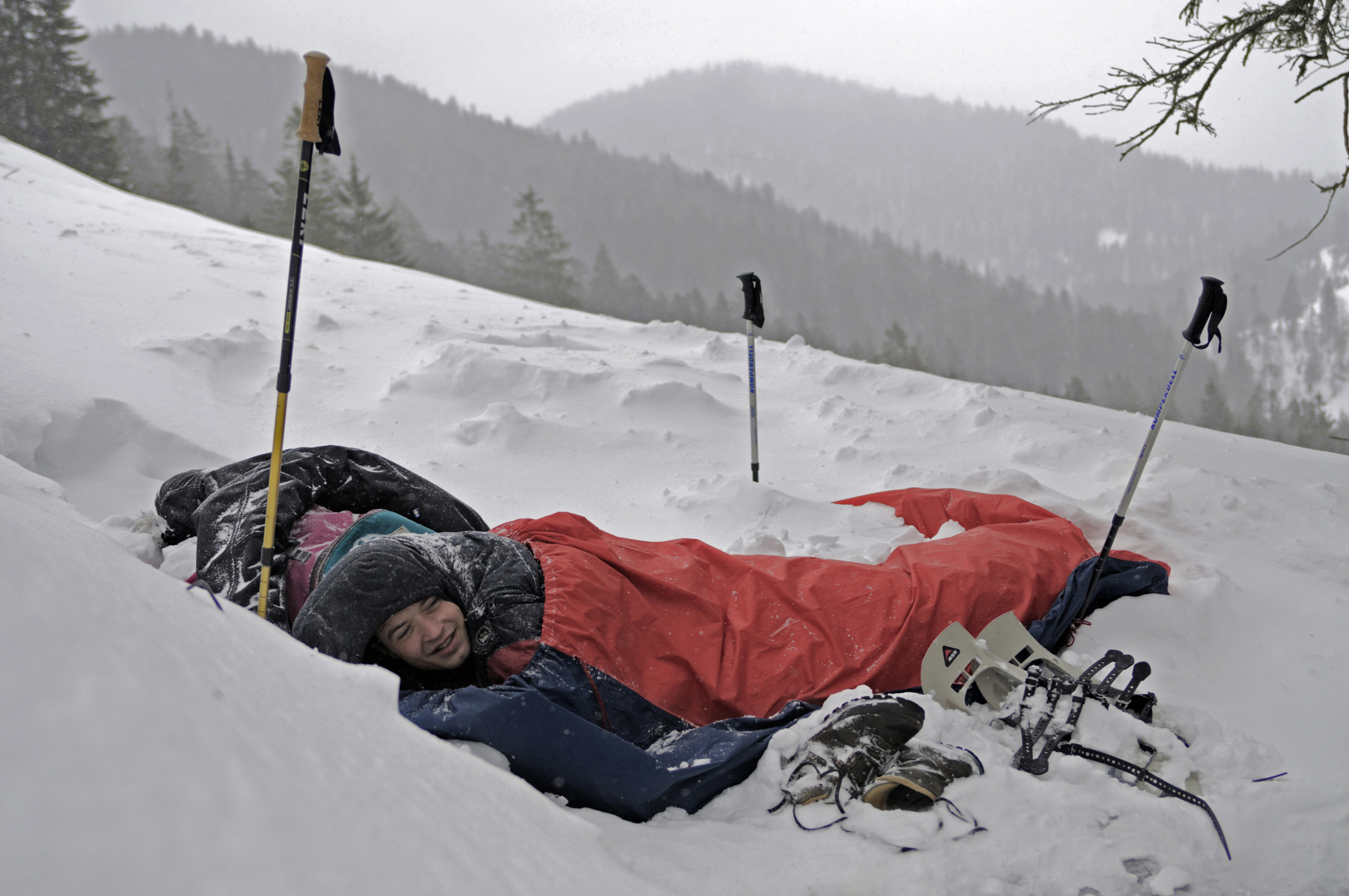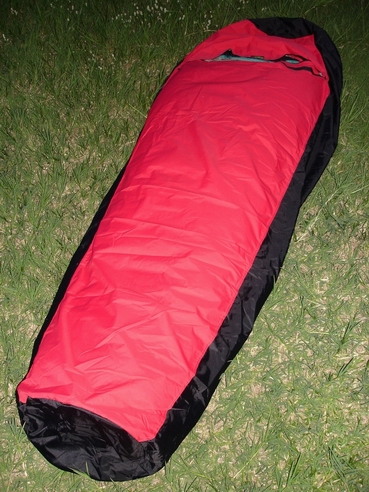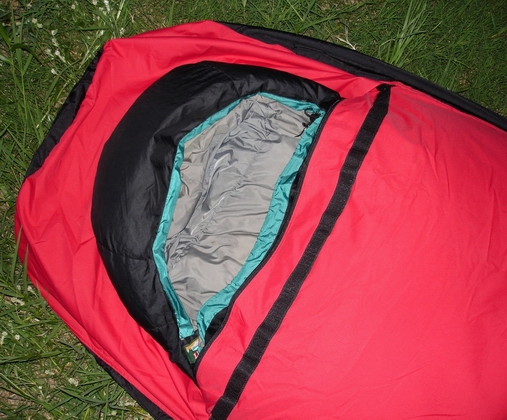Bivouac sack
The bivy sack is a windproof, usually also waterproof bag which is used in nights outdoors, the so-called bivouac as the outer shell around the sleeping bag and protects against moisture, dirt, cooling by wind and other harmful influences. It is made in versions for one or two people and mainly used in mountaineering, climbing or trekking.
Simple bivouac bags are made of waterproof plastic ( usually polyurethane / PU). They are easy and inexpensive, but have the disadvantage that forms over the course of several hours on its inside condensation that moistens the underlying sleeping bag. This process is accelerated by a cold outdoor temperature. PU coated bivy sacks are therefore not suitable for winter conditions and several nights in a row can such bivouac sacks therefore only be used when it is possible to have daytime extensively to ventilate and dry the sleeping bag. In particular, down sleeping bags are very sensitive to moisture.
More elaborate bivy sacks are therefore (eg Gore -Tex, etc.) made on its upper side of a vapor-permeable membrane or a laminate (eg Sympatex, Hyvent etc. ), which can partly as vapor to escape from the interior to the exterior, the moisture without, however, can penetrate from the outside moisture.
A special form is the bivouac tent: a bivy bag that protects using a small, tent -like structure over the head and face from rain and wind, so an intermediate form between bivy bag and tent.
As the inventor of the bivouac sack applies Mathias Zdarsky.










